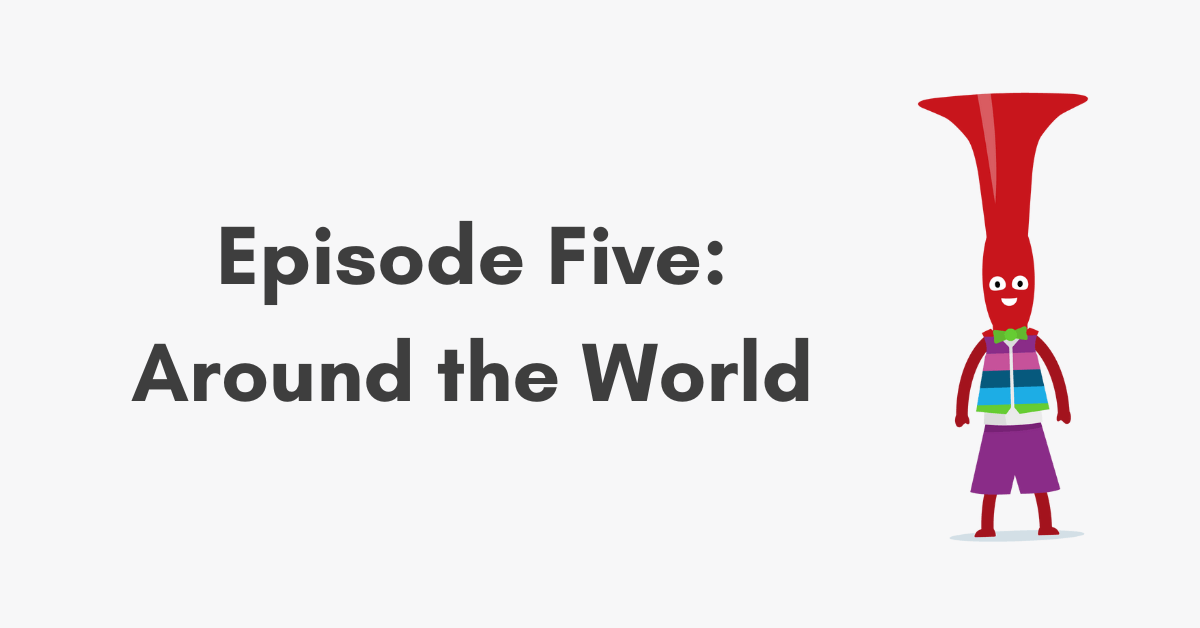
Topics:
December 29th, 2023
2 min read

Susie Riddell and pBone Music are here to whisk you and your class on a global expedition exploring the vibrant world of timbre.
This is episode five of six topics that make up the first year of whole-class pBuzz learning with the pBuzz Primary Resources.
Designed for educators in England and Wales who are delivering the Key Stage 1 National Curriculum for music, they are packed with activities to get more children playing music.
If you are a teacher or even a parent or player, wherever you are 'Around the World', there are plenty of tracks, sheet music, and learning materials for you.
There are two years' worth of lesson plans and resources, including this lesson on how to teach timbre to children as young as five years old!
Before we jet off, have a peek at the planning documents for the 'Around the World' topic.
Timbre is the character or colour of a musical sound – think of it as the sonic fingerprint of each instrument, including the human voice.
Each instrument can produce different timbres, making each sound distinct. It's a bit like the music world's spice rack – every sound adds a unique flavour!
1. Sorting by Sound: In our first lesson, we'll embark on a mission to sort instruments by their timbre.
This hands-on activity requires your class to listen attentively and group instruments based on how they sound, not their appearance or playing method.
2. Voice Variations: Lesson two dives into the diverse world of vocal timbres.
Through a playful game, 'Have you got your... voice?', students will experiment with different vocal sounds – from whispering and talking to spooky and robotic tones.
It's a chance for them to discover the wide range of timbres their voice can produce!
3. Improvising Indian-Inspired Music: The third lesson is all about improvisation with an Indian twist. It's a fail-proof activity where every student can participate at their comfort level.
Groups will either hold a drone, play a repeated rhythm, or create their melody. The key is to have fun and explore different sounds.
4. Dance Around the World: In lesson four, we take a rhythmic detour into dance.
This is perfect for students who shine in physical expression, giving them a chance to demonstrate their skills through dance moves inspired by countries like China, India, Turkey, and Brazil.
5. Consolidation Challenge: The finale in lesson five is to play along with the backing track.
It's a big step, so if it feels more 'bumpy journey' than 'smooth sailing', don't stress. Reverting to the guide track is always an option.
Ready to navigate the diverse seas of timbre with your class? Here are your compass points:
Adam is the Content Manager at pBone Music. This should mean that he’s the ideal person to write about himself, but he finds boasting in the third person a little awkward. He honed his word wizardry with a degree in English Language and Literature at the University of Leeds. He has since written copy for clients and businesses across the land, from awards to something beginning with “z”. He also spent a number of years as a musician. He has written pop songs and even jingles for kids, performed more first dances at weddings than you could shake a pBuzz at, and once played a gig for a pie company at The Etihad Stadium in Manchester. When he’s not reminiscing about those good old days, you might find Adam enjoying the football (although as an Everton fan, that can be difficult). He also loves spending time with his partner, Jen, and his family and friends, and sincerely hopes they feel the same way.
Topics: